Friday, February 22, 2019
Friday, April 1, 2011

Nebraska State Capitol
The Competition
Okay. I will be the first to admit that whole books have been written about this building, much of that ink centering on it's sculpture program. But, why should I let that stop me from doing a blog as well? There are (to me) a surprising number of folks out there who have not heard about or seen this seminal structure. The first time I visited Lincoln, Nebraska I shot off a whole roll of slides with my camera set on the wrong ASA. The next time I drove down from Madison, Wisconsin for a wonderful visit, but it was all late evening and night. The last time I was there I had just gotten out of the hospital after a hernia operation in Toronto and my wife (and driver for that trip) came down with the mumps. So the Nebraska State Capitol has been a bit of a hard luck stop for me, but I think that I have enough pictures to do it justice. Hopefully some day my patron will show up and treat me to 36 hours of sunshine there, early morning, noon and later afternoon. Since the building has sculpture on all four sides catching the sun at one particular time of day is not going to be sufficient.
In 1919 the Nebraska state legislature decided that the state needed a new capitol building and gave Lincoln architect Thomas Kimbal the task of organizing a competition to select an architect. Although several Nebraska architectural firms entered the contest, the array of out-of-state talent must have been disheartening to them and made it unlikely that any of them would win. The record will show that none of them did.

From New York City came McKim, Mead & White, who although a little past their prime - Mead was the only principle still alive and he was never one of the firm's main designers, but with at least one state capital, Rhode Island, to their credit they could not be counted out. MM&W frequently used AA Weinman as their sculptor.

Tracy & Swartwout, were another NYC firm who had already notched a state capitol, Missouri, and who had used a number of sculptors on that commission, Fraser, Calder, O'Neil, Atkins, and more, but I think that it is worth a blog of its own, so I won't get into that one here.

The third New Yorker was John Russell Pope, whose signature works, largely in Washington D.C. were in the future, but he was still a force to be reckoned with. Weinman was sometimes his sculptor choice.

The final NYC entrant was H. Van Buren Magonigle, remembered for his collaboration with sculptor Attilio Piccirilli on New York's Maine Memorial.

Philadelphia's architect was Paul Cret, emerging champion of the new stripped down classicism style that was to morph into Art Deco shortly. Cret had used a variety of sculptors in the past, Gutzon Borglum, Konti, Bottiau and Weinman, though his preliminary design hinted at less architectural sculpture than some of the other designs.

The final competitor, and the winner, was Boston's Bertram Goodhue. Of al the designs submitted his alone lacked the classical elements, domes, colonnades and traditionally used sculpture that populated the others. And while the artists favored by the other architects tended to what were termed "fine arts" sculptors - ones who produced public monuments and portraits as well as the occasional architectural commission, his man, Lee Lawrie, was almost exclusively an architectural sculptor. American's best. To him fell the task of creating one of the most ambitious architectural sculpture schemes in history.
A note on my sources.The competition designs were borrowed from Luebke's "The Nebraska State Capitol: A Harmony of the Arts" University of Nebraska Press, Lincoln, 1990. More will come later from Elinor L. Brown's ''Architectural Wonder of the World: Nebraska's State Capitol Building", State of Nebraska Building Division, Lincoln, Nebraska, 1978. As always I'd like to acknowledge my debt to Walt Lockley, part of the reson why can be found here.
http://www.archsculptbooks.com
There will be (another term for "might") more on sources later. eekxt.
Wednesday, June 17, 2009
Sculptors by sculptors

The last year or so has thrown a lot of curve balls at me, and let's face it, I'm a fast ball hitter. And, one of the things that has suffered has been my blogging. So I have decided to "swing where it ain't" - just do it, move the goods and see what comes up.
I recently saw a photo of a work by sculptor Haig Patigian - a panel from the Bohemian Club Building in San Francisco, (an image [see above] posted on flickr by user RCoshow and shamelessly borrowed by me) and was immediately struck by how much it reminded of a couple of other works, both in Michigan, and both by Parducci. So I dug up pictures of them and am using the "compare and contrast" aspects of them as my jumping off point.

On the surface they are quite similar, being allegorical in nature and intended to represent either "Sculpture" or 'the Arts". They are all more or less square and show a sculptor, in fact a carver, with a mallet in his left hand (most of the carvers I know whack with their right, so three southpaws is unusual) and two hold a chisel in their right. The other holds a column in his right, and this architectural feature is echoed in another of the panels. The figures are all kneeling, facing the right. Two of them are in a contro-posso position, with their faces pointing to the left. The drapery, for those that are inclined to wear it, is very similar, very minimal.
Put another way, these works are very similar. Why? Where is the original that they all descend from? I'll keep looking and you, feel free to let me know your opinions, because here, opinions are welcome.

Tuesday, February 5, 2008
the Collaborative Process - St. John's Seminary
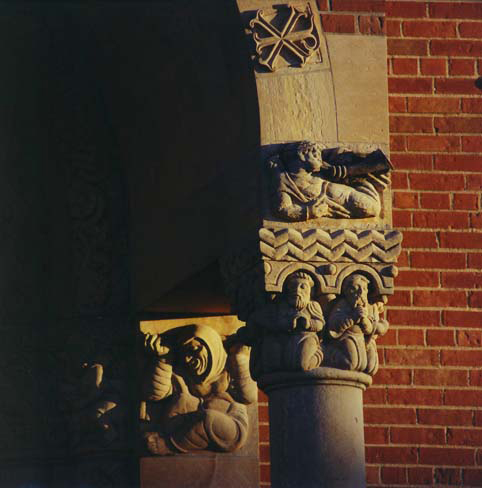
One of the difficulties of trying to look at Parducci's sculptural output is the sheer volume of it. To illustrate this point let's look at just one commission of his.

This example will also allow us to observe the process by which architect and sculptor worked together to produce the final product. In this example we will also look at my view of how the collaborative process involving architect, designer and sculpture seemed to have worked.
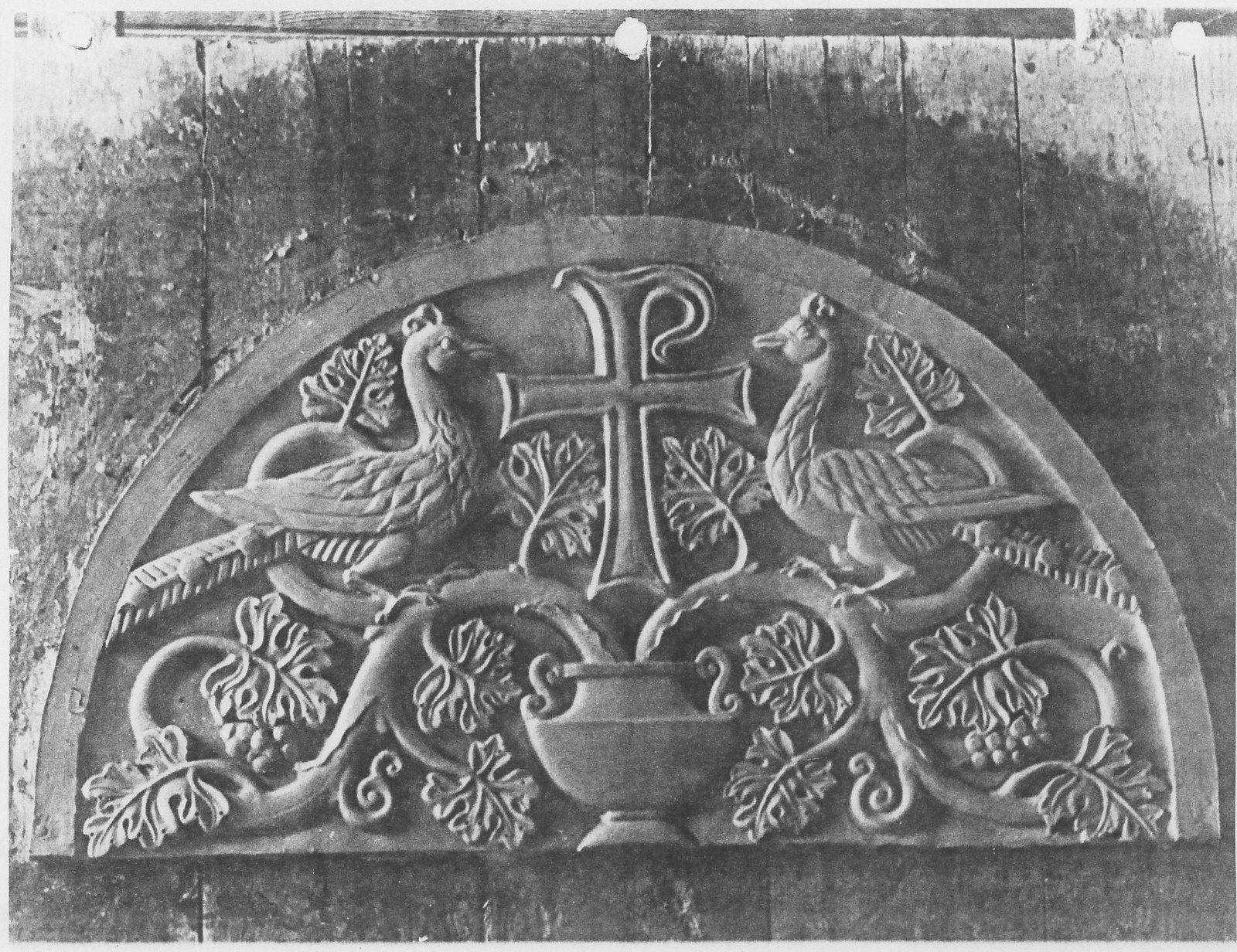
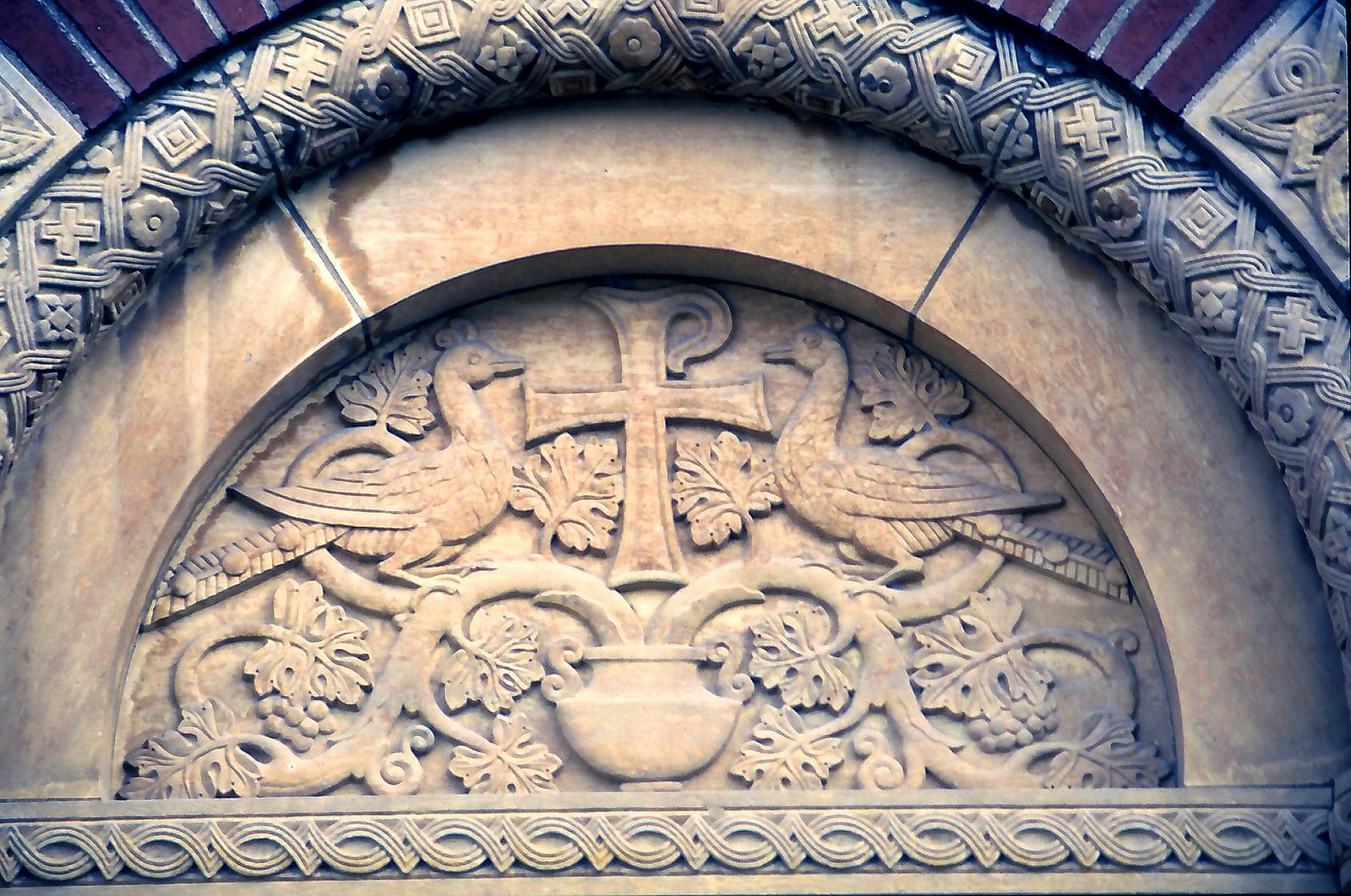
In 1954 or 1955 Parducci was hired by Diehl and Diehl, a father and son architectural firm, to create sculpture for St. John's Seminary in Plymouth, Michigan. It is my belief that by this time Diehl & Diehl, who had worked with Parducci many time before, informed him that they were working in a modern Romanesque format, and what they were looking for: X number of tympanums, so many capitols, a set or two of Apostle symbols, this many door surrounds, that many feet of curved floral or geometric patterns, all of this topped with a monumental figure of Christ.
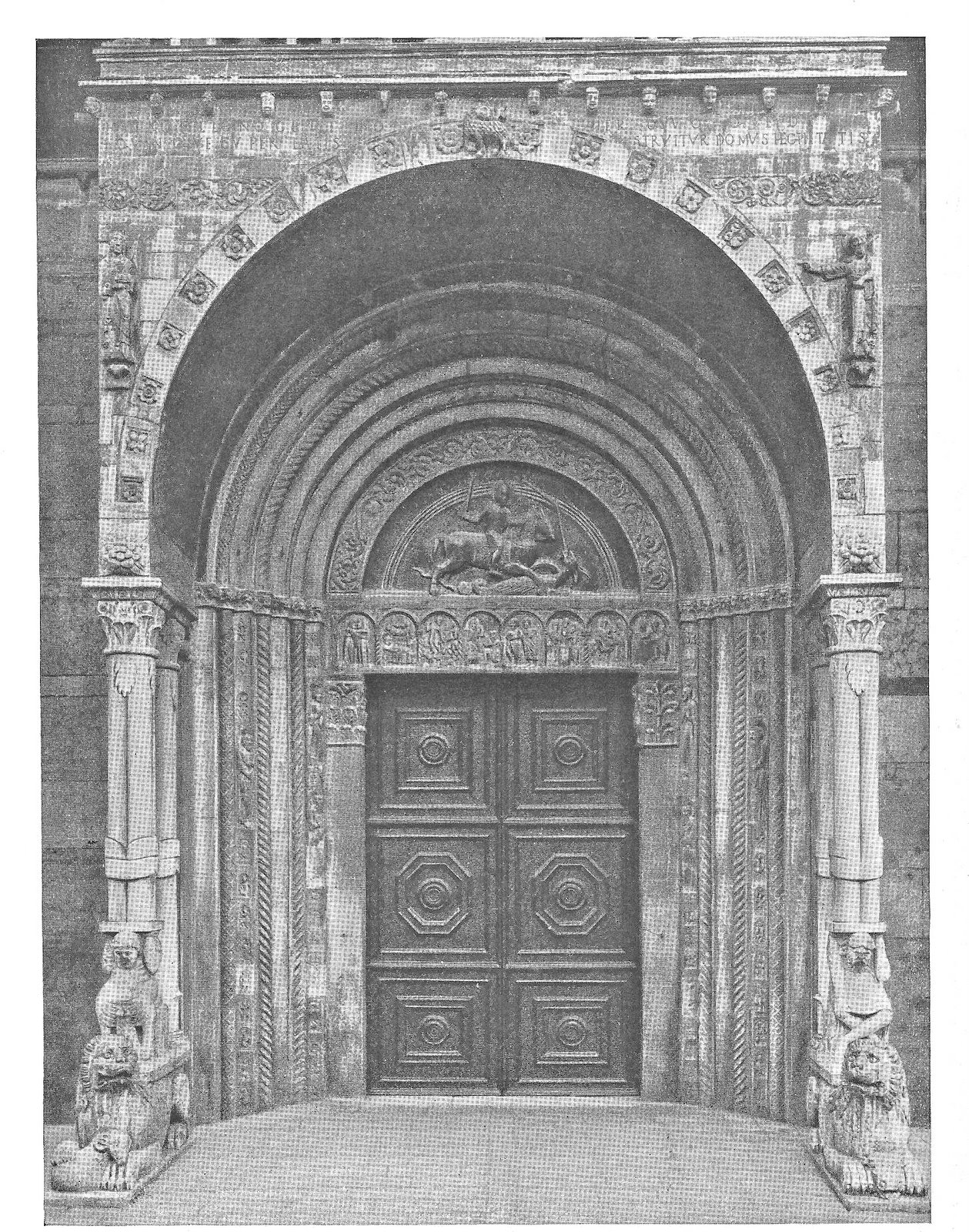
At some point I believe that someone in the process, and this person could have been almost anyone in the process, decided to base the main portal on either the one found at the Cathedral in Ferrara, Italy, built during the 12th Century or one very similar to it. What brought this particular doorway to my attention was that the page with a photograph of it was bookmarked in Parducci's copy of Corrado Ricci's "Romanesque Architecture in Italy". Although the doorways at first might not seem to be that similar, the lions crouching under the pillars of the old church are a bit distracting when looking for similarities because they were not included in St. John's. However when the portals are broken down into a series of individual details the points in common begin to emerge. The amount of time Parducci spent with this book in his studio is somewhat reflected by the number of plaster fingerprints that are found on and in it today.
Then CP would get to work, initially in his formidable library and then on his sketch pad. He would first make sketches of his ideas and present them to Gerald and/or George Diehl, or someone else who might be assigned as the designer to the project. After his drawings were approved he might make a maquette, for example, of the Christ figure. This would be reviewed by the appropriate person and following approval, CP would then begin making a clay version of the piece. Since both Parducci and most of the firms that hired him were located in Detroit, it is likely that designers would on occasion stop by his studio to check out the work in progress.
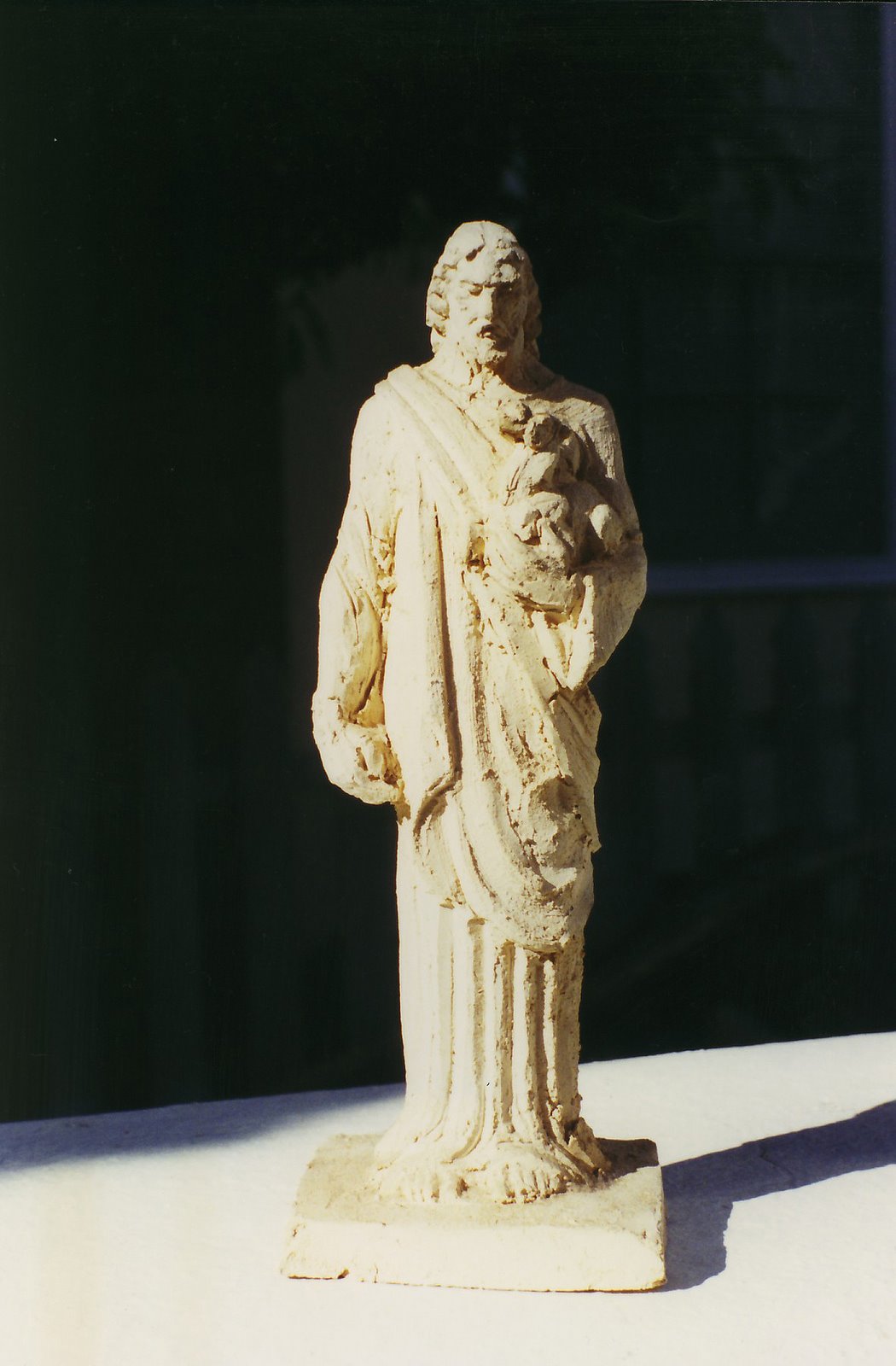
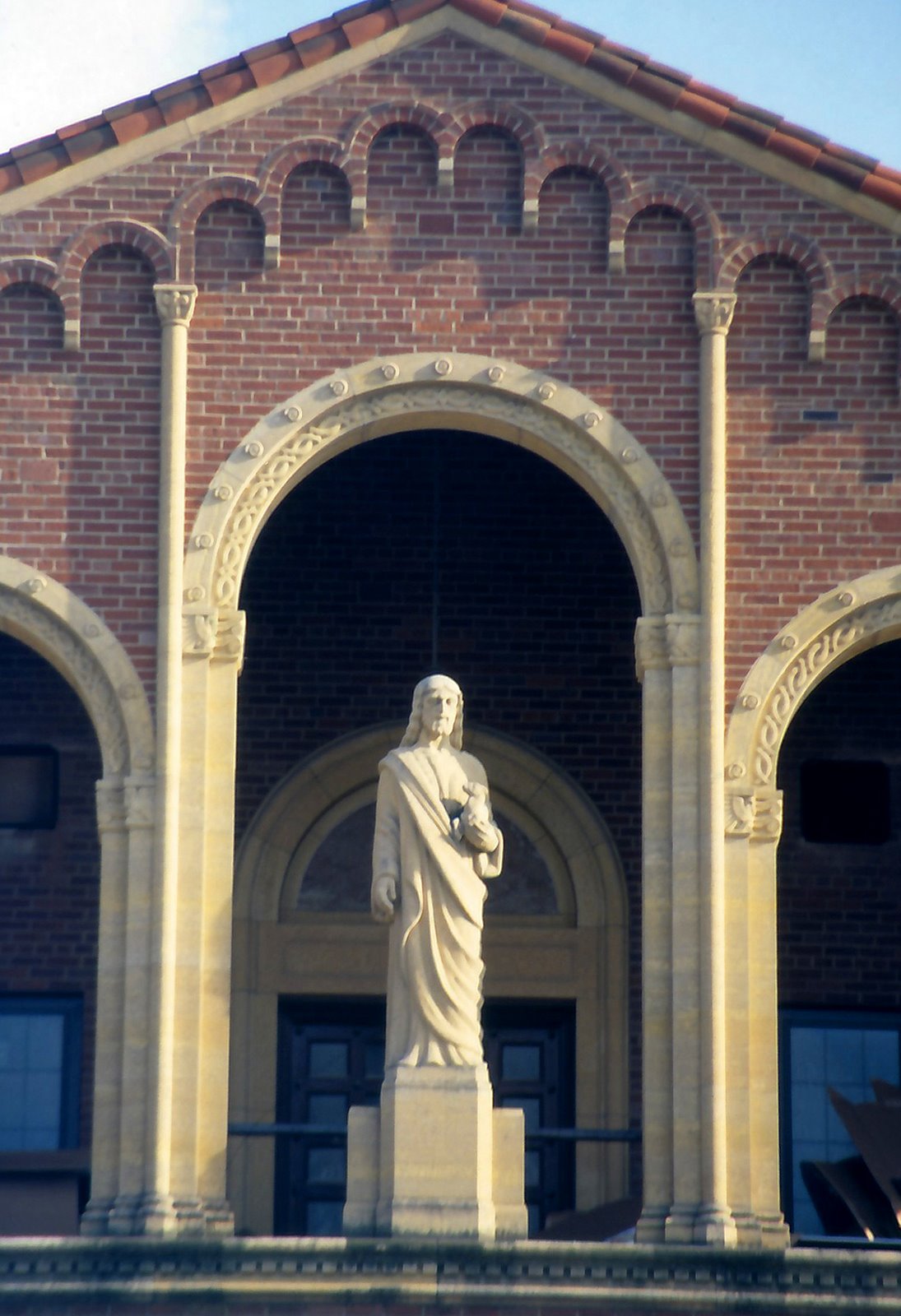
In the Barrie interview he mentions that Albert Kahn would stop by and see him once or twice a week, so it is to be expected that other architects did as well. When the clay version had been okayed, Parducci, or his plaster caster assistant would make a negative mold of the clay piece and then produce a positive version in plaster. Often it would be photographed at this time. Several of these plaster versions have been found in different architect's and client's possessions. A close examination of a particular tympanum at St. John's reveals that it is quite similar to one found in Ravenna, also from the 12th Century. This one was drawn from another of Parducci favorite books, Kowalczyk's "Decorative Sculpture."
After this version of the sculpted detail was approved by the architect the plaster version would be delivered to the stone carver or stone or terra cotta caster who would make the edition that was to appear on the building. Frequently the work would be carved in situ, that is to say carved on (usually) limestone blanks that had been built into the building. Because pieces that were cast in stone or terra cotta could not include much, if any, undercutting, on occasion a carver would do some undercutting on the work, either before or after it was attached to the building.
It is my understanding that this particular doorway has been altered, or at least much of the sculpture has been covered up by a canopy that has been added since my pictures were taken. Looking at some of my pictures I realize that work was already underway at the time and I feel fortunate that I was able to get the pictures that I did.
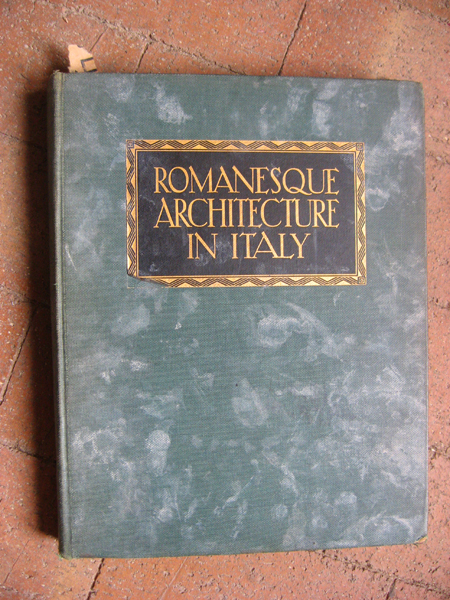
Tuesday, January 22, 2008
Corrado Parducci's Stations of the Cross

In the process of preparing my book, "Shadowing Parducci" for publication I am scanning hundreds of prints and slides - the result of the 25 years spent collecting them. Since all the photos used in the publication will be in b/w, that is how I am scanning them. Fortunately my scanner can convert color slides into b/w pixels, so that helps. But here is what just happened.
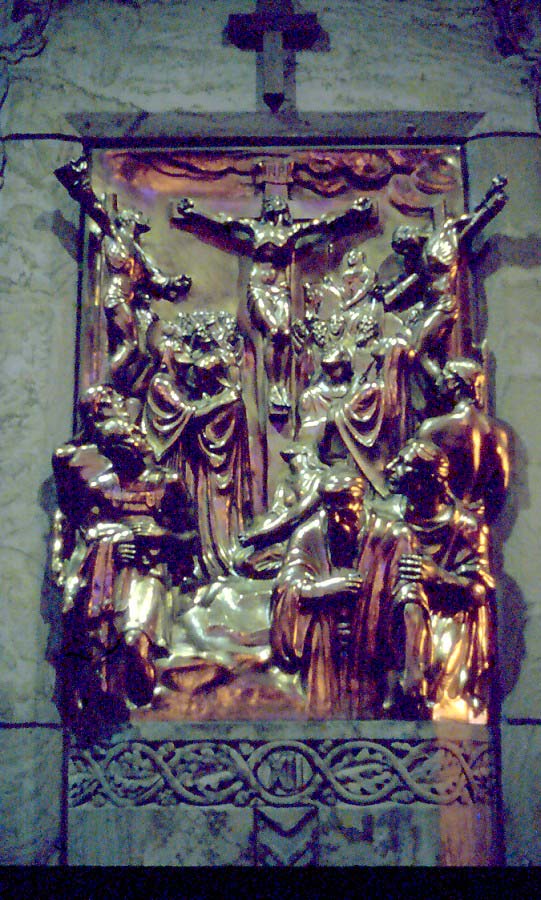
I was working on Parducci's Stations of the Cross from the Shrine of the Little Flower in Royal Oak, Michigan, and as I was scanning them - a fairly slow and laborious process - I was running through what I was going to write about them since there are interesting stories, both about CP's interactions with the notorious Father Coughlin and with his brother Rudolph - that you will have to wait for the book to get - and I
 was struck by how wonderful the Stations looked, bathed in the light from the church's stained glass windows, and was lamenting that the color would be lost in the book when it occurred to me that the color could be saved on my blog. So here I am. Here we are. Here they are. Some of them are not very crisp, but I made a choice to shoot them without a flash to try and capture how they looked being there.
was struck by how wonderful the Stations looked, bathed in the light from the church's stained glass windows, and was lamenting that the color would be lost in the book when it occurred to me that the color could be saved on my blog. So here I am. Here we are. Here they are. Some of them are not very crisp, but I made a choice to shoot them without a flash to try and capture how they looked being there. 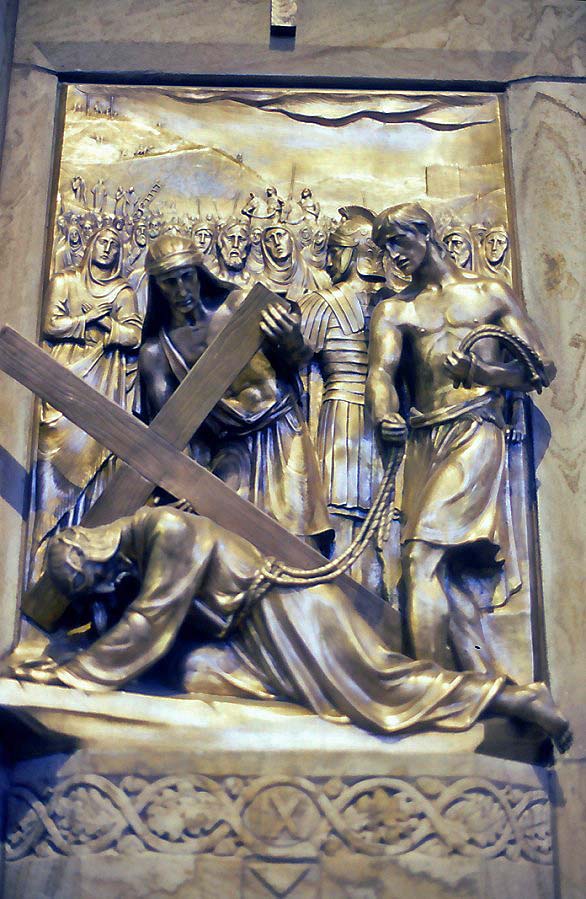
A couple of the things that captivated me about these works was the amount of detail in the background and the interesting cast of characters the the Parduccis placed around the scene, Pilate, Simon, Caiaphas, the Marys, the Roman soldiers and a bunch more. Check them out for yourselves and enjoy.
For those interested in more on Fr. Coughlin I recommend Donald Warren's book "Radio Priest - Charles Coughlin, The Father of Hate Radio". You won't find Parducci in it, but, hey, you can't have everything.

Sunday, January 13, 2008
Corrado Parducci's Zodiacs
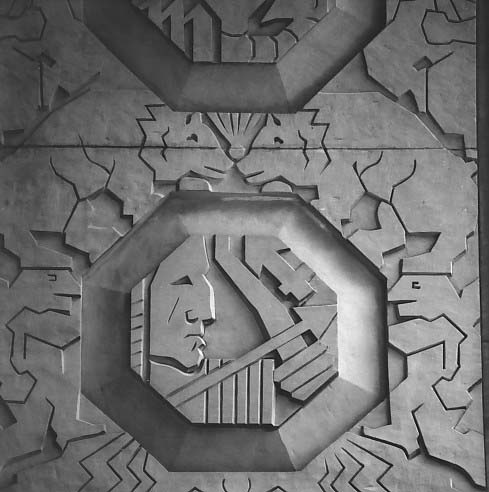

It is always interesting, at least for me, to speculate as to who chooses the various themes and symbolic content that is then carved on a building. Sometimes it is a building committee or patron, other times it's the architect and occasionally the sculptor gets to decide. I suppose that mostly it is some combination of (remember this one from Multiple Choice Test Questions), "all of the above."
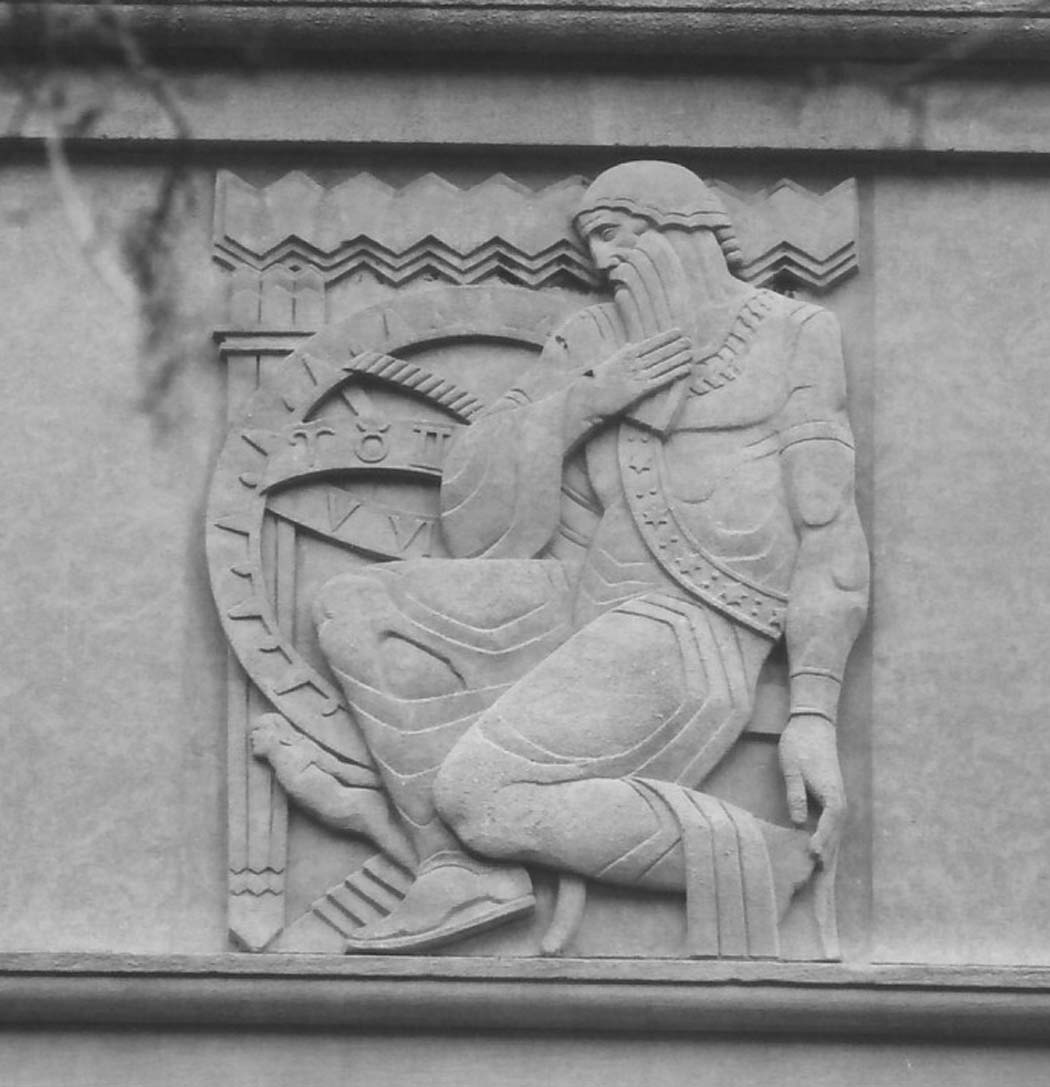
So here and now we are going to look at several different versions of the 12 Signs of the Zodiac that Parducci produced. As is usually the case, if you wish to know where these can be found, wait for my book, "Shadowing Parducci'' to come out, or just leave something in the comments.
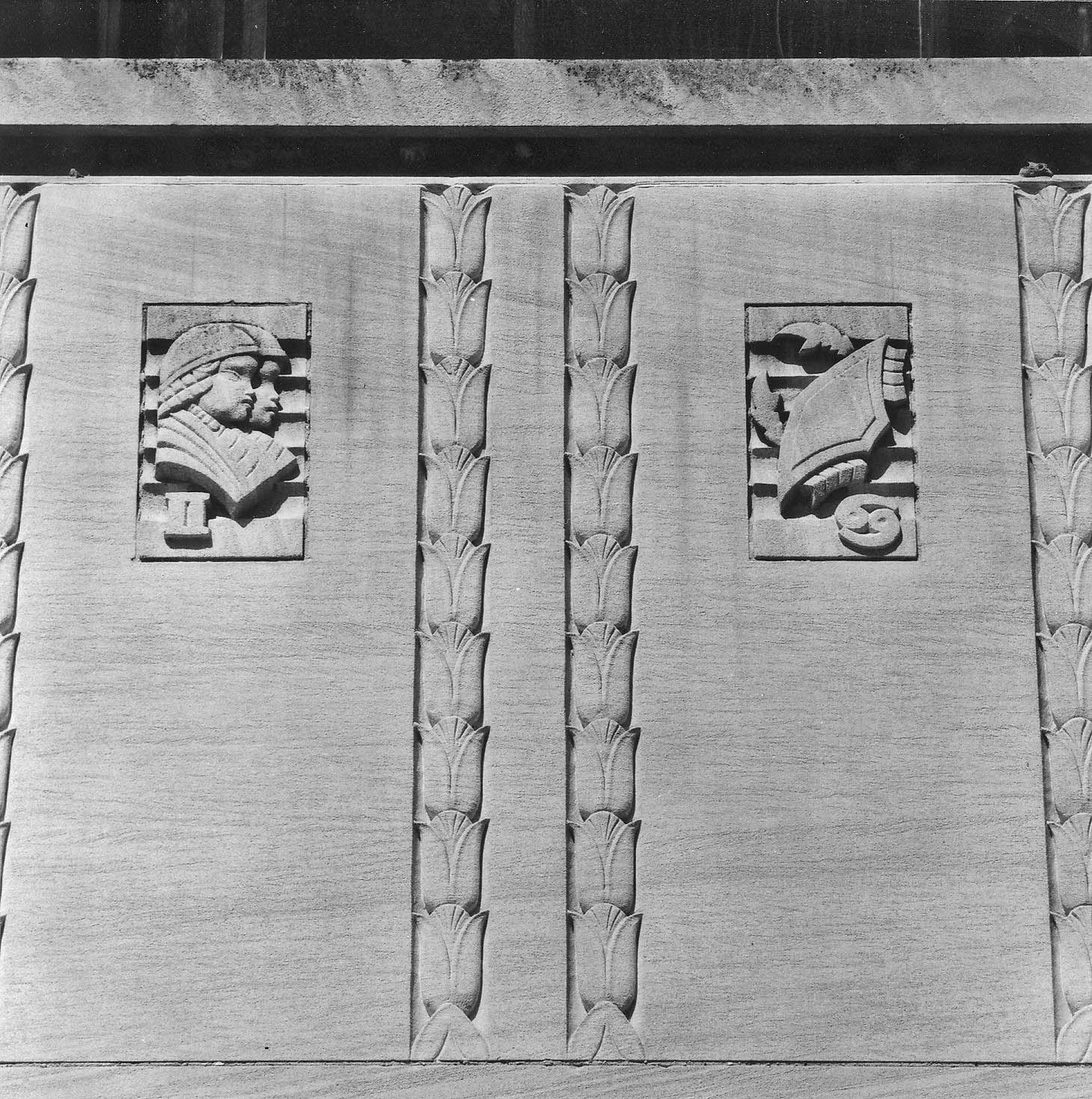
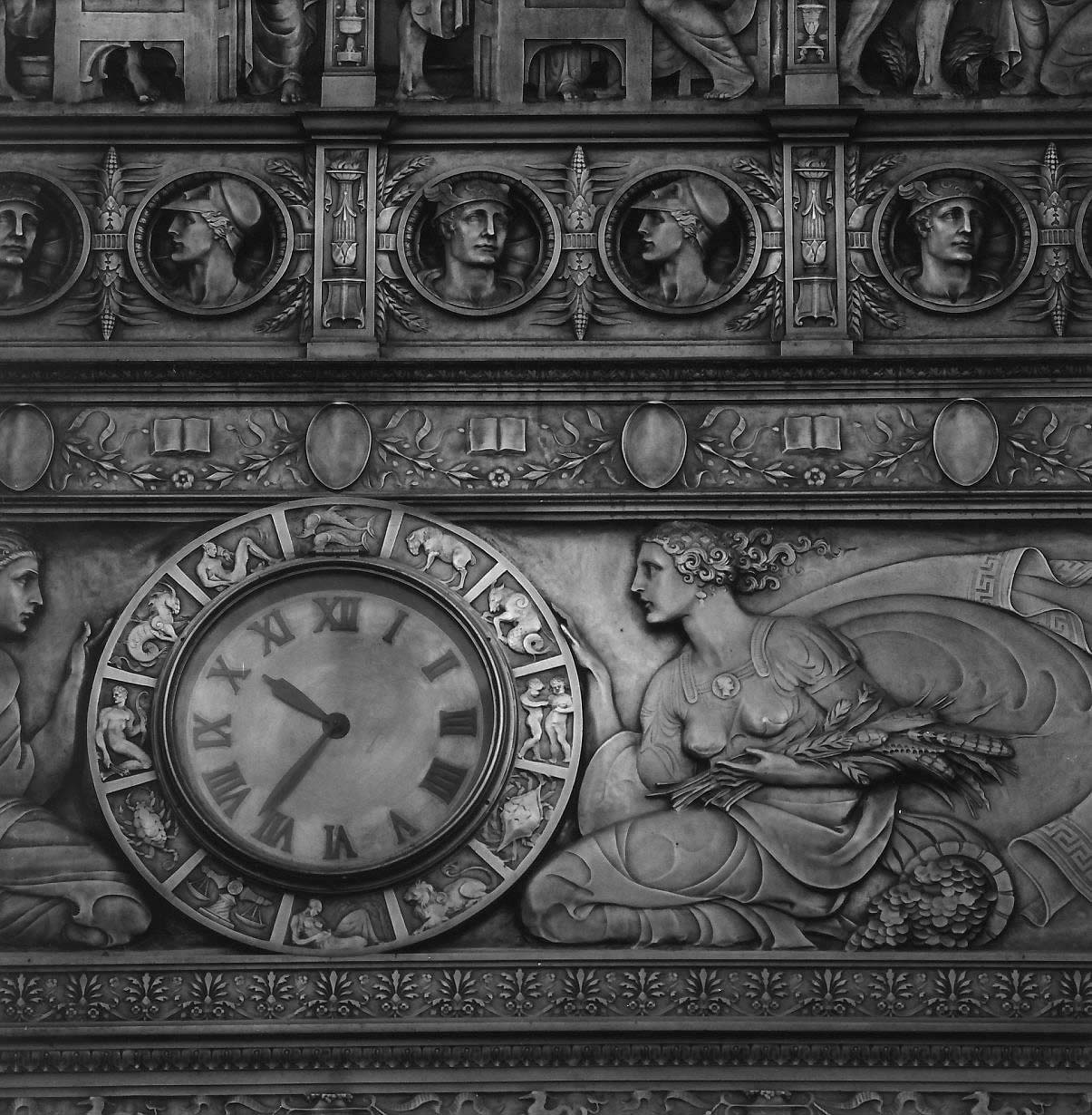
Check out more architectural sculpture here
http://www.archsculptbooks.com
Wednesday, January 9, 2008
Corrado Parducci - Detroit's master architectural sculptor
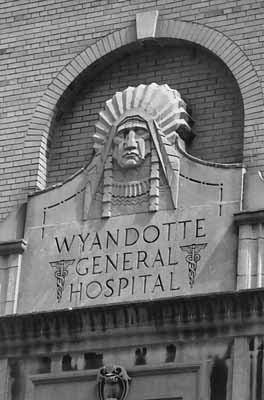

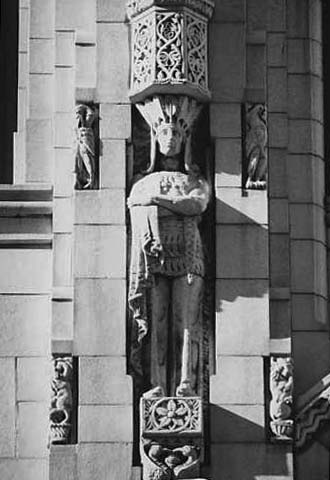
Corrado Parducci was possibly America's most prolific architectural sculptor, working, by his account, on or in over 600 buildings. I am producing a book, "Shadowing Parducci" that is an attempt to catch on paper what he did in clay, plaster, stone, terra cotta, bronze and wood. While reviewing his work many themes are presenting themselves and I think I'll respond to some of them here.
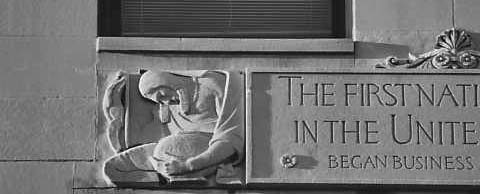
American art is frequently ambivalent about the place of Native Americans and their treatment in sculpture reflects this feeling. In architectural sculpture the use of both figures of natives and of their decorative elements was fairly widespread, particularly during the 1920s and 1930s. Parducci generated quite a few such images, many of them reproduced here.
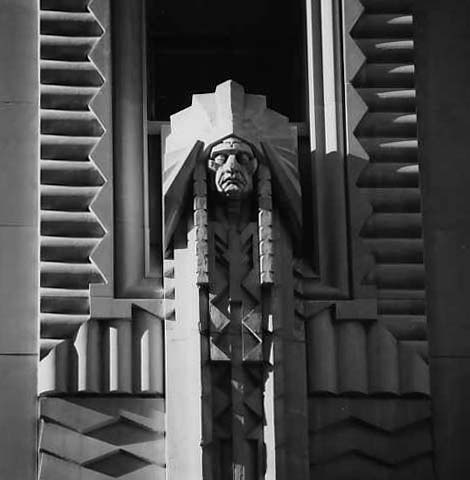

During the 1950s (?) CP (as he is sometimes called . . ... by me) was commissioned to create a statue of the Shawnee leader Tecumseh to be placed on a rough fieldstone pedestal on Walpole Island, First Nations territory across the Canadian border from Detroit. Funding for the project fell through and all that remains of the project is the pedestal and the maquette that CP produced.
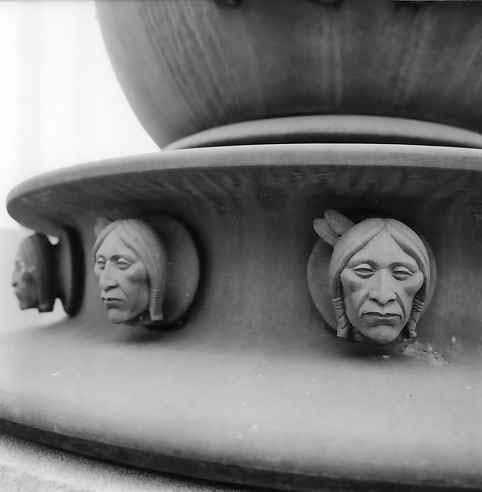
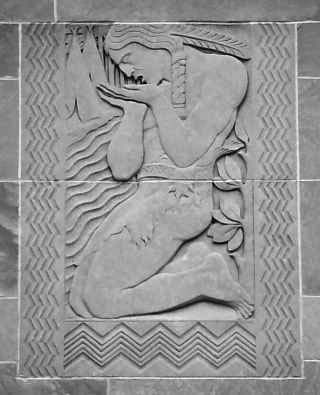
As always, feel free to drop me a comment if you wish more details on these works, or anything else.
Subscribe to:
Posts (Atom)
